Ford just texted me a link to the first official photos of the upcoming Ford Bronco Raptor, expected to be the most off-road capable civilian vehicle Ford has ever built. Here’s a first look.
I don’t have a whole lot to go on other than these photos, but what I can immediately surmise is that the engine powering the Ford Bronco Raptor — expected to arrive sometime in 2022 — will be some kind of boosted motor, as there’s clearly an intercooler in that lower bumper opening. Some car websites speculate that the Bronco Raptor will have a version of the 3.5-liter Ecoboost V6 that makes 400 horsepower in the F-150 pickup; others guess the Bronco Raptor will get a 400 horsepower 3.0-liter Ecoboost V6 like the one in the Explorer ST. I wouldn’t be surprised if the Raptor cranked power well above 400 to compete with the Jeep Wrangler 392, but in any case, you should expect a 400-500 horsepower boosted V6 of some sort.
Will it sound as good as the 392 V8 engine found in the Jeep? I doubt it. Will it, like the Wrangler, only be available with an automatic? I’d guess it will. Still, just look at this beast; the tires look like 37s, which will almost certainly bring the Bronco’s approach, departure, and breakover angles well above anything Jeep offers on any four-door Wrangler. And though I don’t expect the Ford to out-articulate the Jeep (i.e. its ramp travel index will likely be lower by virtue of lacking a front axle), I do expect it to crush the Jeep in high-speed off-road travel, which where the “Raptor” brand earned its stripes in the first place.
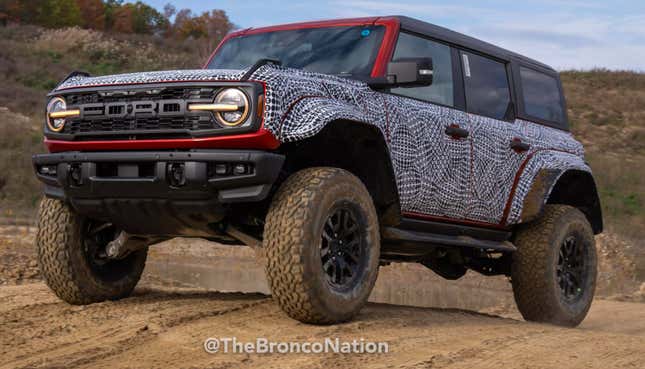
The Bronco Raptor’s suspension appears to be remarkably different than the standard Bronco’s. Up front, the lower control arms look significantly beefier than those of the non-Raptor Bronco. Here are some zoomed-in looks at the Raptor’s control arms:

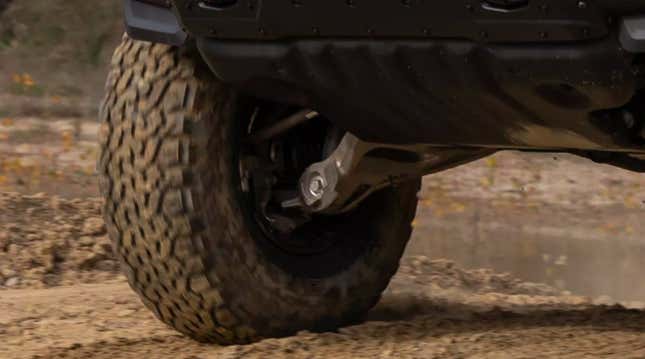
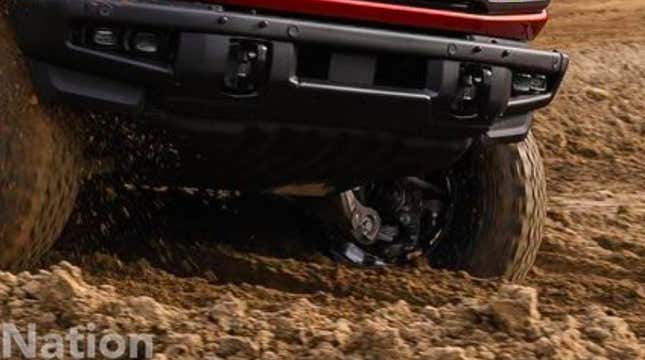
And here’s how the Bronco Badlands’ lower control arms look:
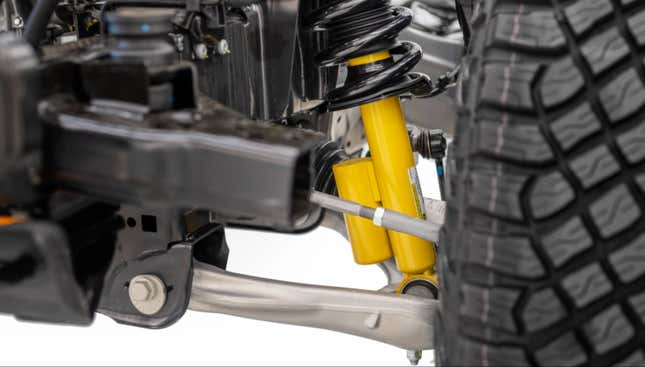
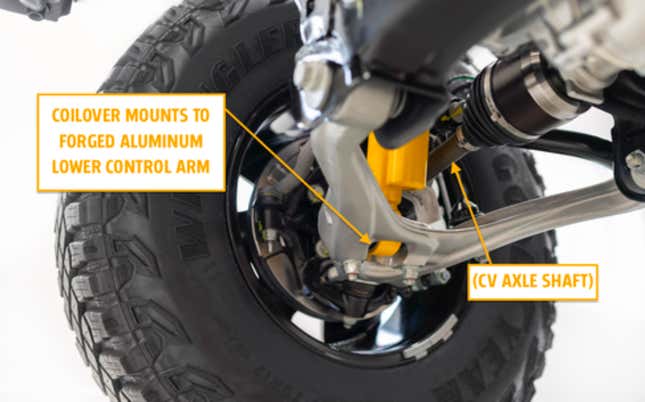
This one’s from the back side facing forward. You can see where the coilover mounts via two bolts from the top (the nuts are shown under the control arm):

Not only does the Bronco Raptor’s control arm look more substantial, but you can see that the damper mounting method is completely different, no longer a bar-pin, but instead a through-bolt (like on the F-150 Raptor shown below). That damper also appears to be mounted farther outboard when compared to the non-Raptor.
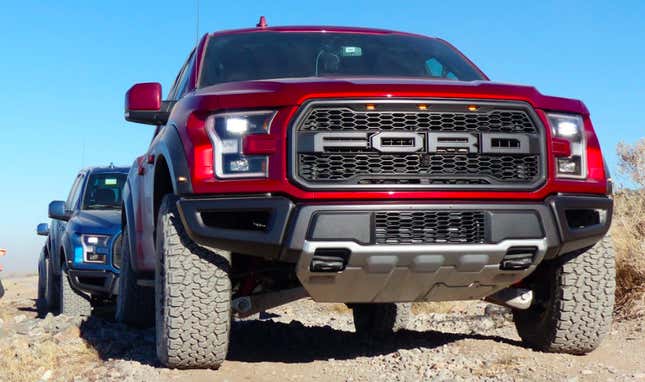
If I had to guess, the Raptor’s control arms are longer than those on non-Raptor Broncos, and the knuckles also likely play a role in moving the tires outboard to widen the stance and allow for more wheel travel before CV-angle bind/longevity becomes an issue. I bet the steering geometry is moderately different, too.
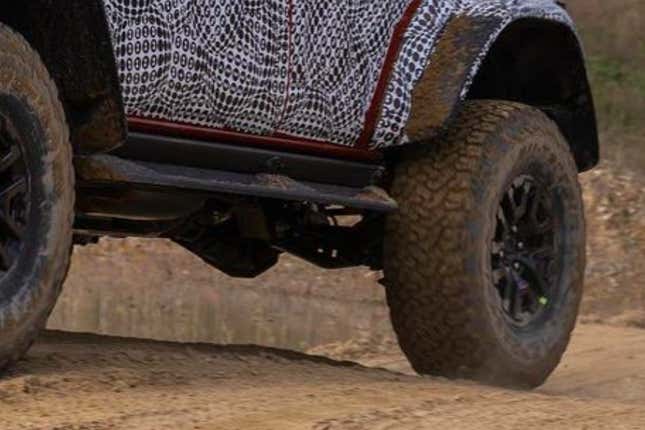
The photos don’t show the Bronco Raptor’s rear suspension clearly, though you can see that the regular Bronco’s tubular lower control arms for its solid rear axle have made way for control arms with slightly more complex geometry (appears to be a welded, hollow design; you can see holes in the arm in the image above; for a clearer image, check out TFLoffroad). It’s quite similar to the lower control arms on the F-150 Raptor:
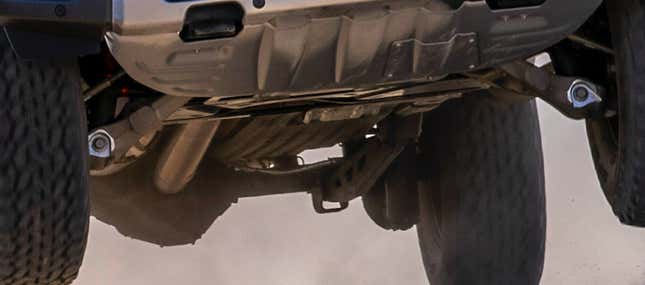
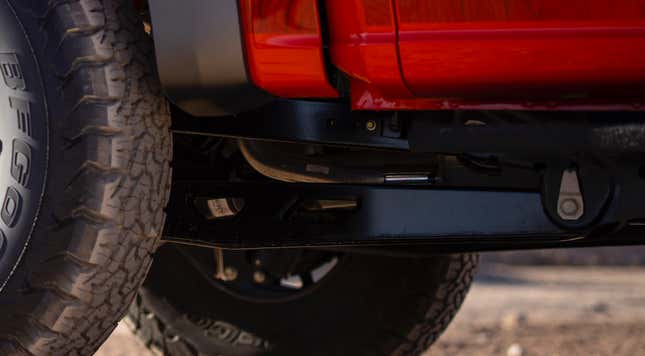
An example of the non-Raptor Bronco’s tubular arm lower arm is shown below:
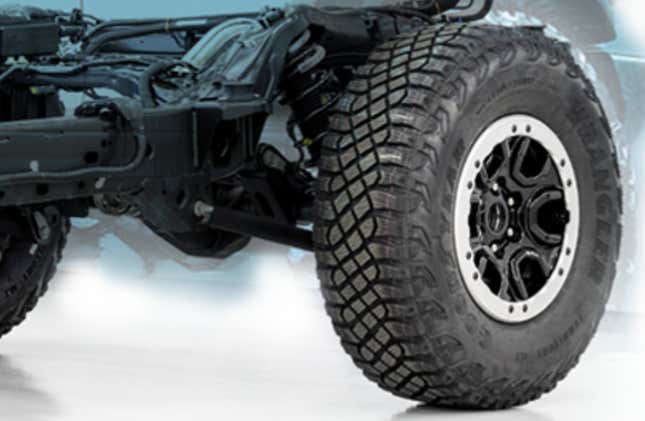
Obviously, the absurdly wide fender flares are new, but it looks to me like the fenders and quarter panels are, too, giving the Bronco Raptor a menacingly wide look.
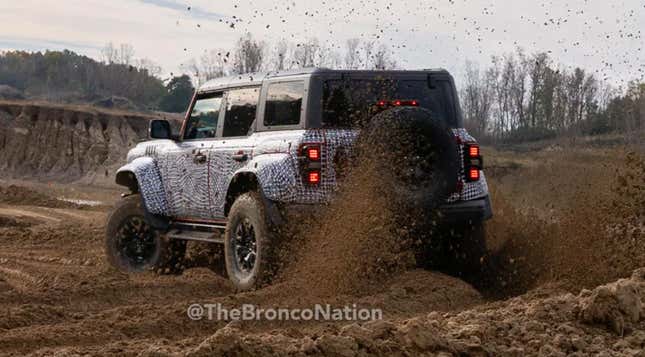
The taillights shown in the image above are also different than those on a standard Bronco, the grille says “FORD” instead of “BRONCO,” and the Raptor has three yellow lights at the top of its grille — lights that you’ve come to expect on ultra-wide F-150 Raptors (which need the lights to meet regulations).
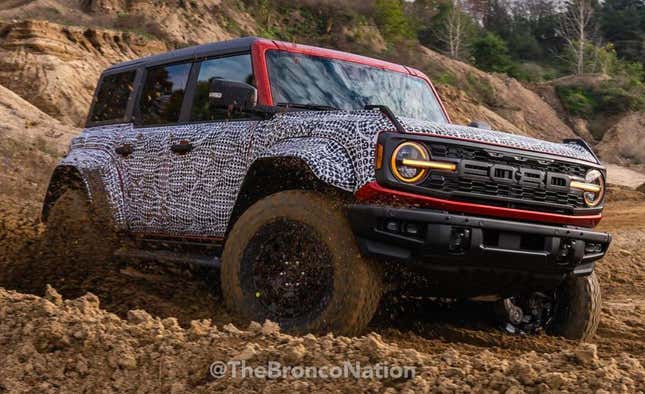
Car and Driver provides some details on the new Bronco Raptor on its website, though there’s no mention of sourcing (the Fox shocks have been spotted on test vehicles):
The Ford Bronco Raptor will be equipped with Fox’s Live Wire twin-tube bypass dampers (also used on the F-150 Raptor), making it ride much higher than the standard SUV. It’ll be available with 37-inch BFGoodrich K02 all-terrain tires (also a newly available option on the F-150 Raptor), though a set of smaller 35-inch tires should be standard.
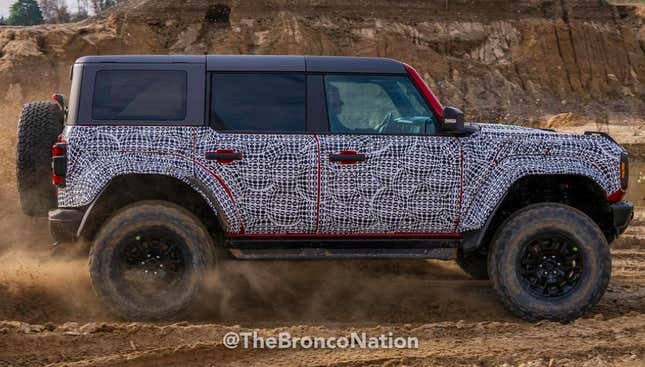
I don’t know that I’d necessarily want 37-inch tires on a vehicle set up to do high-speed rally driving, but if I wanted to do technical off-roading, the improved geometry should help. Above all, I’m excited to see how much wheel-travel Ford has eked out of this platform given the new suspension geometry.